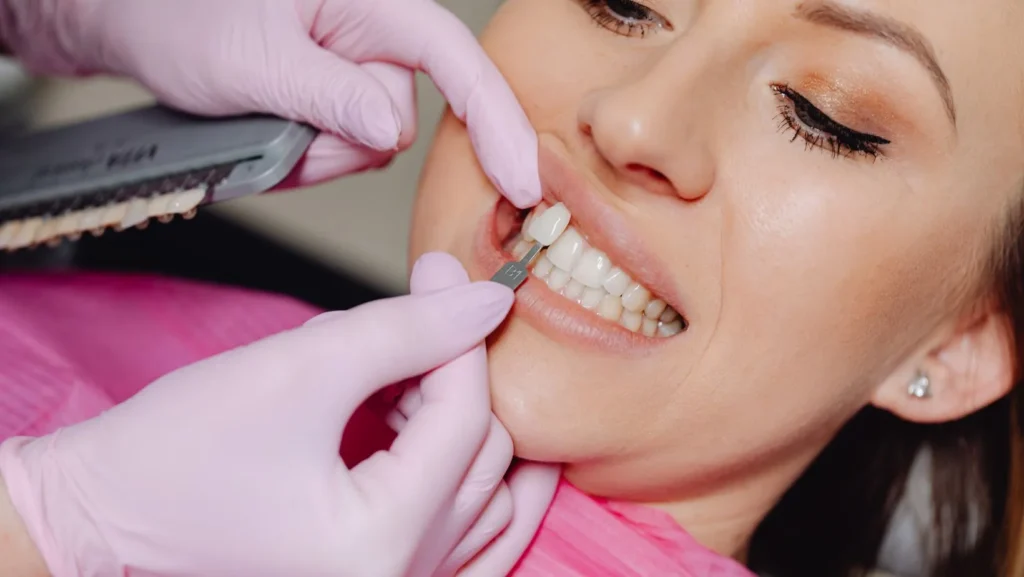Understanding Your Options and Maximizing Benefits
The dazzling smile seen on the gleaming pages of magazines and television screens is often the result of cosmetic dentistry, with dental veneers leading the charge in creating picture-perfect teeth. But one central point of contention for many considering veneers is whether this smile investment is covered by dental insurance. In this comprehensive exploration, we’ll look into the intricate world of dental insurance to reveal what’s typically hidden away in policy texts regarding veneer coverage.
Veneers 101: What Are They and What Do They Cost?
Before we jump into the nitty-gritty of insurance policies, it’s essential to understand the basics of veneers. To cover the front surface of teeth, veneers are thin, custom-made shells composed of materials that match the color of the teeth. They are a popular choice for improving the appearance of teeth that are discolored, worn, chipped, or misaligned and can even close gaps between teeth. From ceramic to resin composite, veneer material types cater to various needs, and their cost reflects this versatility.
The typical range for veneers can vary widely depending on the material, geographical location, and the dentist’s experience. On average, a single veneer can cost anywhere from $900 to $2,500, and when getting a veneer for every visible tooth—leaving you with that million-dollar smile—costs can escalate significantly. But don’t despair just yet, as dental insurance could potentially soften this financial blow.
Decoding Dental Insurance: Does Dental Insurance Cover Veneers
In the intricate world of dental insurance, it’s crucial to understand the underlying principles to uncover if veneers are included in the coverage. Dental insurance operates a lot like health insurance but with some key differences:
- Coverage Focus: Dental insurance is geared primarily towards maintaining good oral health rather than treating diseases, so coverage for procedures like veneers—perceived as a cosmetic improvement—can be different.
- Fee Schedules and Reimbursements: Dental insurance often utilizes a fee schedule to determine the cost of procedures and the percentage the insurer will cover. Reimbursements can vary based on the type of procedure and the plan you have.
- Annual Limits: Most dental insurance policies set a maximum amount to pay for covered services within a plan year.
Understanding your dental insurance policy is the crucial first step in determining what your plan covers and how it deals with veneer costs.
Coverage for Veneers: Does Dental Insurance Cover Veneers
When it comes to dental insurance and veneers, it’s rarely a clear-cut affair. The coverage can be affected by several factors:
Policy Type and Veneer Classification
Different dental plans may offer varying degrees of coverage for veneers, especially due to their cosmetic nature. Here are the typical policy types and their inclination towards veneers:
- Indemnity Plans: Offer the most flexibility in choosing dentists and having procedures covered. However, they may have a lower percentage of coverage for veneers.
- Preferred Provider Organization (PPO) Plans: Typically cover a percentage of veneer costs but offer a better rate if you use an in-network dentist.
- Health Maintenance Organization (HMO) Plans: May not cover veneers at all due to the high cosmetic component.
Limitations and Exclusions
Exclusions are procedures that dental insurance policies do not cover, and veneers may fall under this category without a legitimate dental need. Other treatments that may be considered non-essential
include teeth whitening not associated with a covered dental service and orthodontics for cosmetic purposes.
The limitations set by the insurance companies can also reduce the scope of coverage for veneers. Annual maximums, waiting periods, and missing tooth clauses are some common conditions that could restrict coverage.
Out-of-Pocket Costs
Even if you have a dental plan that covers veneers to an extent, you should be aware of potential out-of-pocket costs. Several of these might be relevant:
- Deductibles: The amount you must pay before your insurance coverage begins.
- Co-pays and Co-insurance: The percentage of covered costs you are responsible for. Depending on your plan’s reimbursement rates, this could mean paying 50% to 80% of the total veneer price.
To maximize your dental insurance coverage for veneers, consider these strategies:
- Review Your Policy: Look for the terms and conditions related to cosmetic procedures and find out precisely what your plan covers.
- Plan for the Best Time to Get Veneers: Some insurance plans have waiting periods before covering specific procedures. Plan accordingly to avoid disappointments.
- Save a Tooth, Save Some Money: Coverage is more likely if a veneer is deemed necessary due to dental health issues. A chipped or decayed tooth might make the case for a medical necessity.
- Utilize Pre-Treatment Authorizations: These documents can specify the extent of coverage for a planned procedure, providing you with clarity and preventing unexpected expenses.
Misconceptions About Veneer Coverage
There are common myths surrounding dental insurance and veneers, and it’s important to dispel them:
- Veneers Are Always Covered as a Standard Cosmetic Benefit: This is not typically the case, as insurance companies often view veneers as entirely cosmetic.
- Plan Categories Do Not Affect Coverage: The type of dental insurance plan you have significantly impacts veneer coverage.
- Pre-Existing Conditions Do Not Matter: In dental insurance, as in health insurance, the status of your teeth before you purchase a policy can affect what’s covered.
Alternatives and Important Considerations
Don’t lose hope if your dental insurance doesn’t provide the coverage you need for veneers. There are alternative options to make that eagerly awaited smile upgrade more attainable.
Payment Plans
Many dental offices offer payment plans or financing options that can help you spread out the cost of veneers over time. Some may even have agreements with third-party financing companies for longer-term arrangements.
Consider the Plan as a Whole
Veneers are just one piece of your dental health puzzle. If you have significant coverage for other, more necessary procedures, the overall value of your dental plan may make the cost of veneers more manageable.
Professional Advice
Consult with your dentist about a realistic approach to affording veneers. They can provide insights into the best ways to approach your unique situation based on their experience and knowledge of your oral health.
FAQ: Does Dental Insurance Cover Veneers
Here are some common questions people ask when exploring their insurance coverage for veneers:
- Are Veneers Considered Cosmetic?
- Yes, veneers are typically classified as a cosmetic procedure because they primarily improve the appearance of teeth.
- Will My Plan Cover Any Veneers at All?
- It depends on the individual plan, but for purely cosmetic reasons, coverage could be minimal or non-existent.
- Can I Get an Exception if I Think My Veneers Are Medically Necessary?
- It’s possible with adequate documentation and a good case, but exceptions for cosmetic services are rare.
Conclusion: Smile Brightly, Even on a Budget
Veneers can be a life-changing dental solution for anyone looking to enhance their smile significantly. While navigating the murky waters of dental insurance coverage may feel daunting. Understanding the nuances and actively engaging with your insurance provider can yield positive results.
Maximizing your benefits by understanding policy details, seeking professional guidance, and exploring financing options can bring you closer to that perfect, radiant smile. Remember, transparency and communication are key. Discuss options with your dental insurance provider and be proactive about managing your dental care to avoid surprises and make the most of your insurance coverage.


